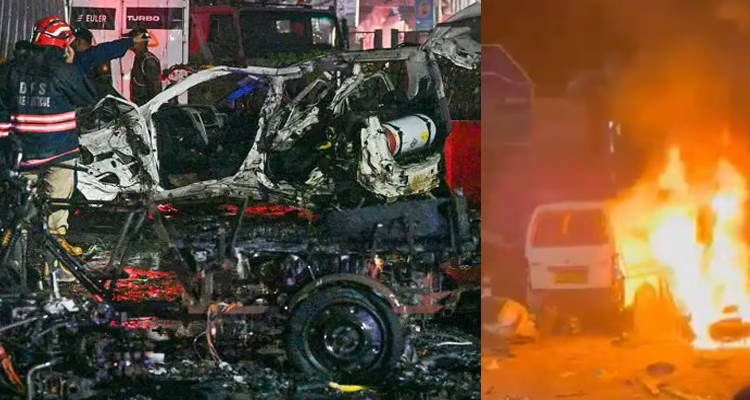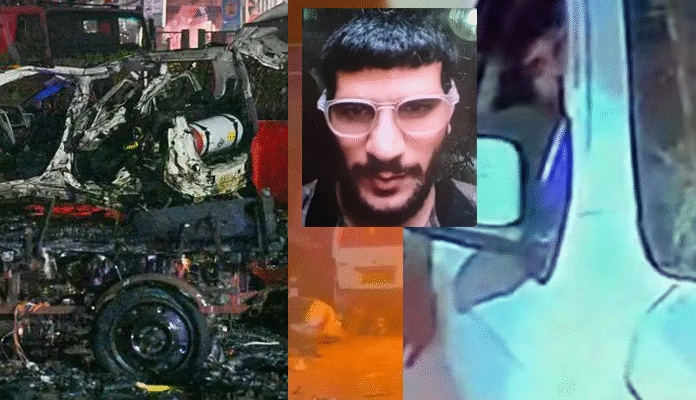
New Delhi: The investigation into the Red Fort car blast has taken a dramatic and disturbing turn. Security agencies say the attack was meant to be just one part of a multi-city, six-location terror strike, internally codenamed “D6” — a reference investigators believe points to December 6, the anniversary of the Babri Masjid demolition, a date often used by extremist groups for symbolic, retaliatory attacks.
Officials now confirm that the Red Fort blast may have prematurely exposed a far bigger, synchronised terror blueprint, preventing potentially catastrophic strikes across northern India.
Six Locations Identified in Terror Blueprint
Interrogation of arrested suspects, digital chats and recovered hand-drawn maps indicate that the network had shortlisted six high-footfall, high-symbolism locations:
-
Red Fort, Delhi – Symbolic target; first detonation already occurred
-
India Gate, Delhi – High-visibility monument
-
New Delhi Railway Station – Major civilian hub
-
Chandni Chowk / Jama Masjid area – Extremely dense crowd zone
-
A key temple complex in Uttar Pradesh – Name withheld by investigators
-
A market district in Haryana (likely Gurgaon or Faridabad) – Close to module’s operations
Officials emphasise that the list may expand as data from seized hard drives and encrypted chat apps is decoded.
‘D6’: The Code That Unlocked a Bigger Conspiracy
According to investigators, seized documents and digital chats point to a blueprint marked “D6,” outlining the plan for six locations across four different cities. The White Hyundai i20 that exploded near the Red Fort was reportedly just one of several cars primed for the operation.
Other vehicles linked to the plot include a Ford EcoSport, Maruti Brezza, and Swift Dzire, all allegedly prepared to carry heavy explosive payloads. The Red Fort incident, officials believe, may have been either a premature detonation or the first phase of a cascading series of attacks.
‘D6’: December 6 Marked for Serial Explosions
Recovered notes and encrypted messages repeatedly reference “D6.”
Investigators interpret this as:
D = December
6 = 6th of the month
This coincides with December 6, the anniversary of the Babri Masjid demolition (1992) — a date that extremist outfits historically attempt to exploit for propaganda value or retaliatory symbolism.
Sources say the network planned simultaneous or staggered blasts across Delhi and neighbouring states on that date to trigger widespread panic.
Multiple Cars Prepared as Moving Bombs
The Hyundai i20 that exploded near Red Fort was only the first of a fleet of vehicles the terror module had prepared.
Other cars seized or traced include:
-
Ford EcoSport
-
Maruti Brezza
-
Maruti Swift Dzire
Each was reportedly fitted — or being readied — to carry high-intensity IEDs similar to the Red Fort device.
Forensic reconstruction suggests bombs were designed to use:
-
2–3 kg of TATP (Triacetone Triperoxide) as the trigger
-
Large quantities of ammonium nitrate + fuel oil as the main charge
-
Total explosive weight up to 40–50 kg per vehicle
Investigators describe the plan as “coordinated vehicle-borne IED attacks on symbolic and crowded public spots.”
White-Collar Terror Cell Under Spotlight
At the heart of the conspiracy is a network of individuals operating under professional covers — including doctors, academics, and university-linked operatives.
One of the key suspects, Dr. Muzammil Ganaie, is believed to have conducted multiple recces around the Red Fort earlier this year, mapping vulnerable spots and peak-hour crowd patterns.
Earlier raids across Delhi, Haryana, UP and Kashmir uncovered nearly 2,900 kg of explosive materials, revealing the scale and ambition of the network.
Module Involved ‘Highly Educated’ Operatives
The terror network included:
Doctors
University-linked professionals
Well-trained handlers operating across Delhi, Haryana, UP, and Kashmir
One key suspect, Dr Muzammil Ganaie, allegedly conducted multiple recces of the Red Fort, India Gate, and Old Delhi areas earlier this year.
Explosive materials recovered in raids include nearly 2,900 kg of chemicals, indicating preparations for multiple large-scale attacks.
Red Fort Blast Was Likely a Premature Trigger
Investigators now suspect the November 10 explosion may have been:
-
an accidental premature blast, or
-
an early activation that forced the module to abort the broader plan
Evidence suggests the bomber may have panicked or mishandled the extremely unstable TATP while inside the car.
This premature explosion is now believed to have prevented the D6 serial-blast operation.
What the Foiled Plan Tells Us
Officials say the foiled plot had all the hallmarks of a professional, highly coordinated operation:
Multiple cars designated as “delivery units”
City-wide targets chosen for symbolic and high-footfall impact
A fixed operational date (D6)
Recces and planning conducted months in advance
Sophisticated communication through encrypted channels
Cross-state logistical support, including storage, funding and transport
Nationwide Investigation Intensifies
Security agencies — including NIA, NSG, Delhi Police Special Cell, and central intel units — are now focusing on:
-
Decoding all mentions of “D6” and “6L” (suspected shorthand for “six locations”)
-
Identifying sleeper cells linked to the module
-
Mapping procurement routes of chemicals, detonators and vehicles
-
Tracing international linkages, including possible radicalisation channels
-
Examining cross-border hawala funding used to finance the plot
Officials say the foiled plan is one of the most significant terror attempts uncovered in recent years, both in scale and symbolic intent.



